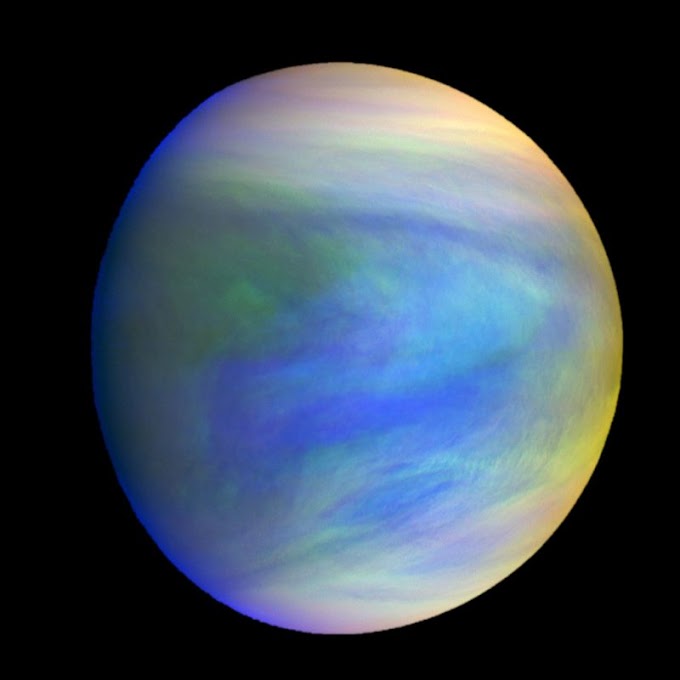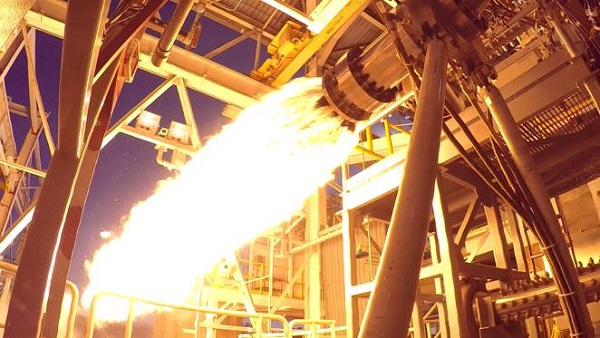 |
| Artist's impression of Venus. (Credit: The Week) |
Unless you've been living under a rock, you must've come across the news that has been making headlines - "
Life on Venus?", while some seem to overlook the question mark, a fraction of the others are skeptical about it, but they are not our concern, at least not for now.
We will try to keep an open mind and adhere to the facts, but there's no harm in fantasizing a bit now and then.
This article is segregated into three major segments -
Probable history of Venus, Recent findings and What can we expect.
So, let's board the 'Ship of the Imagination' and travel back to the 'golden days' of the now hottest planet in our solar system.
History of Venus - At a Glance
Apparently same sized, placed almost at the same distance from the Sun and comprising of about the same mass, Earth and Venus are quite aptly referred to as planetary twins. They could've even been harboring similar lifeforms if not the latter turned into a hell.
Paradiso
Fluffy white clouds dotting the blue sky, gentle breeze and ocean waves, seems like a perfect vacation. This is Venus at the early days of our solar system, as scientists speculate, such a planet could have possibly sustained life.
We're talking about Venus in the range of 3 billion to 700 million years ago, as per recent studies, it may have had surface water and a habitable condition around that range of time.
In 1978, NASA's Pioneer Venus spacecraft returned data suggesting that shallow oceans may once have been on the planet's surface.
To understand water coverage, researchers reconstructed Venus' environment using a series of five simulations.
According to a statement from the Europlanet society, all of these simulations suggest that Venus' temperature range fell between 20 °C to 50 °C for nearly 3 billion years.
 |
Artist's impression of an early habitable Venus. (Credit: NASA)
|
Inferno
The planet went through a gruesome transition, credit goes to a number of factors, one leading to another.
As speculated, four and a half billion years ago, the newborn solar system with Sun at it's center, had different range of 'habitable zone' which is the distance of a planetary body from the Sun best suited for life to flourish. It is during this early stage that Venus might have surface water and could've sustained life.
But as the Sun grew bigger, the habitable zone moved outwards and Venus' transition began.
With the temperatures rising, evaporation of surface water became prominent and the atmosphere grew thicker with the accumulation of carbon dioxide.
Rays from the Sun entering the planet heated it's surface, but the surface heat couldn't radiate out to space due to heavy amounts of carbon dioxide, as a result, the surface got reheated. This phenomenon known as greenhouse effect led to global warming in Venus.
Several simulations were made to depict early conditions of Venus. Michael Way, one of the study researchers shed some light on the fate of Venus -
"Our hypothesis is that Venus may have had a stable climate for billions of years. It is possible that the near-global resurfacing event is responsible for its transformation from an Earth-like climate to the hellish hot-house we see today."
 |
| Actual image of Venus. (Credit: NASA) |
Recent Findings
The soaring surface temperature of Venus cannot possibly sustain life, hence it was predicted that lifeforms may be found in the clouds. Recent detection of phosphine in the clouds presses to the fact that if life is out there on the hellish planet, then it's likely to be cloud-life.
What's Phosphine?
A chemical compound with high toxicity and flammability, mostly used in the production of semiconductors.
Phosphine or PH3 the falls under the category of organophosphorus compounds, that is, organic compounds containing phosphorus. It has an odor of garlic or decaying fish (in one word, it stinks) but pure phosphine is odorless.
Apart from industrial production, phosphine on Earth is naturally produced by microbial activity, as stated in the paper published in the interdisciplinary science journal, Nature -
Trace PH3 in Earth’s atmosphere (parts per trillion abundance globally) is uniquely associated with anthropogenic activity or microbial presence—life produces this highly reducing gas even in an overall oxidizing environment.
Phosphine and Venus
Way back in 1967, Carl Sagan and Harold Morowitz hinted on the possibility of microbes in the temperate regions of Venus' atmosphere. Considering that, our present detection of phosphine may be a symbol of life, but we must not take it as an absolute certainty until and unless we find direct evidences.
Venus has a surface covered with basaltic lava and studying the sudden spikes in sulfur dioxide, one can deduce that the planet has quite a number of active volcanoes. Under such conditions, production of phosphine on the surface is less likely to have happened. Moreover, the thick atmosphere of the planet exerts a massive force of 1300 pounds per square inch on the surface, that's the reason why multiple spacecrafts were crushed when they landed on the surface.
Hence, the only possible explanation is if there's life on Venus, then it's likely to be thriving in the clouds.
Cloud-life of Venus: What can we expect
This is part where we will employ a significant deal of imagination to try and get a rough idea about life on Venus.
From all the data collected, it seems likely that we can expect floating organisms in the skies of Venus as once Carl Sagan predicted the same for Jupiter and named them 'floaters'. Again, it's just a hypothesis.
The surface is the least probable place to search for life, courtesy goes to high atmospheric pressure and blazing heat.
A Russian scientist, while studying the images of the surface of Venus obtained from the Russian space probe, Venera-13, claimed to have seen a crab-like moving object. This created quite a lot of opinions clashing, finally space experts shed light on this matter addressing it as a distortion in the camera.
 |
The strange object which was later clarified
to be just noise in the camera. (Credit: QUEST)
|
Also check out









0 Comments